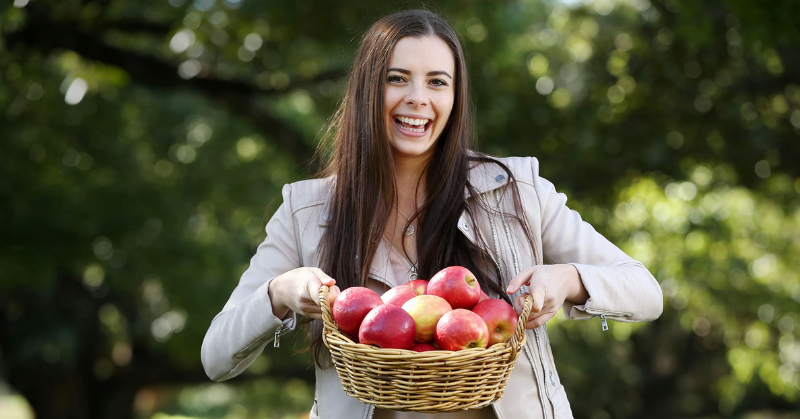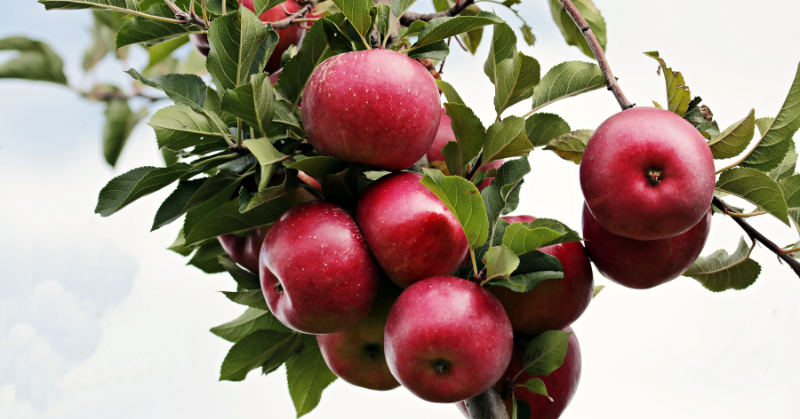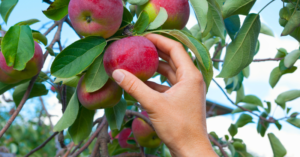New research from Edith Cowan University (ECU) is paving the way to develop Western Australia’s next super healthy apple.
Western Australia has a strong pedigree in breeding outstanding apple varieties. While WA’s Pink Lady apples and the more recent BRAVOTM apples are known around the world for their great taste, it turns out they’re also some of the best for our health.
This research, led by Dr Catherine Bondonno and Dr Nicky Bondonno from ECU’s School of Medical and Health Sciences and Professor Michael Considine from UWA, examined which WA-grown apples were the best for our health based on their content of polyphenols – natural compounds associated with a decreased risk of heart disease, diabetes and cancer.
It’s hoped the information could be used to breed new and even healthier apples.
The research, published in the journal Food and Function, tested 91 varieties of apples finding that the WA-bred apples had the highest polyphenol content.
Dr Nicky Bondonno said that while Pink Lady and BRAVOTM apples are undoubtedly among the tastiest, they are also among the healthiest.
“If you want to get all of the health benefits of eating apples, you’ve got to eat the whole thing.”
Co-lead, Dr Nicola Bondonno
When it comes to health benefits – it’s skin deep
The research revealed an important way to get the healthiest bang for your buck from eating apples.
“This research showed us that across all of the apples we sampled, more than half of the polyphenols were found in the skin,” Dr Nicky Bondonno said.
“If you want to get all of the health benefits of eating apples, you’ve got to eat the whole thing.”
“We know that apples are a rich source of polyphenols. Because they’re such a popular fruit, eating apples is one of the most common and most simple ways in which we can add these really important compounds into our diet”.

The human factor
Dr Catherine Bondonno and the research team tested samples from the skin and flesh of the 91 varieties of apple and identified the types with the highest concentration of polyphenols.
“Our analysis found that the Pink Lady variety contained the most polyphenols, so also wanted to assess the levels of these compounds and the smaller compounds that they are broken down into after we eat them,” she said.
“We gave 30 participants Pink Lady apples to eat and then measured the levels of these compounds in their blood.”
“Interestingly, we found a very large variation between people in the level of polyphenol compounds in the blood. This indicates that there is a difference in how people absorb and break down these compounds and that the beneficial effects of apples on health may differ from person to person.”
An apple a day
On top of their polyphenol levels, there’s plenty of other reasons to eat apples for health, including:
- High levels of dietary fibre
- Low glycaemic index (GI)
- Good source of potassium, vitamin C, essential minerals and B vitamins
- No fat, cholesterol or salt.
The research team included staff from ECU, The University of Western Australia, Royal Perth Hospital Research Foundation, the Australian National Apple Breeding Program, and the WA Department of Primary Industries and Regional Development. This study was funded by Horticulture Innovation Australia Ltd (#AP12036).
‘Phenolic composition of 91 Australian apple varieties: towards understanding their health attributes’ was published in the journal Food and Function and the article can be accessed at the Journal’s webpage.




